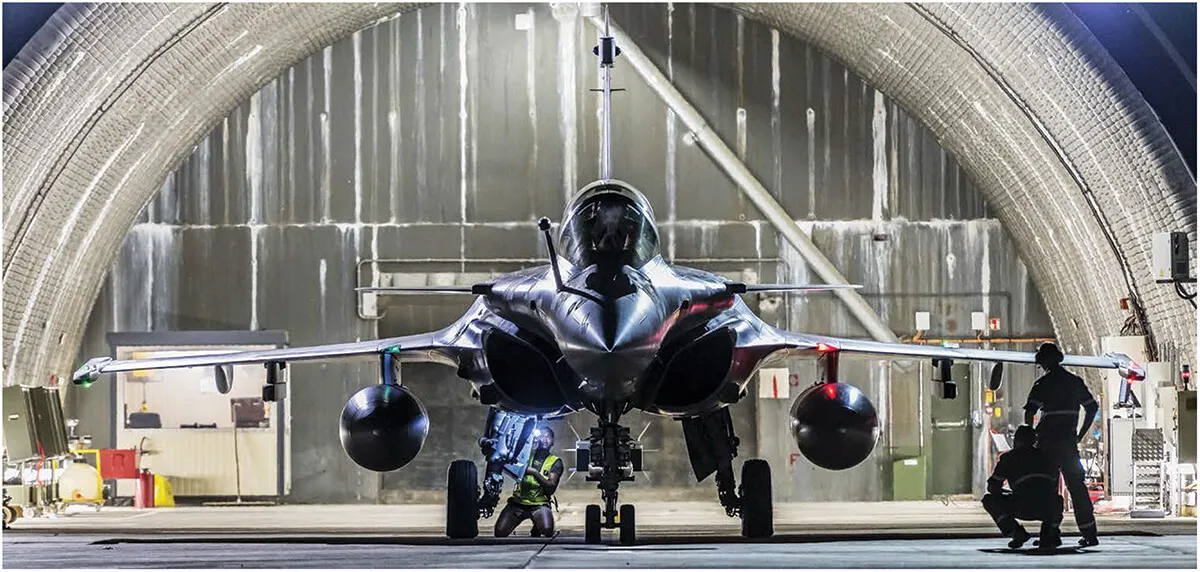France’s Nuclear Forces in 2025: Stable Numbers, Active Modernization
A Rafale BF3 practices alert in a protective aircraft shelter at an unknown base (potentially Saint Dizier) with an ASMPA nuclear cruise missile shape attached to its center pylon. (Credit: French Air Force).
The latest Nuclear Notebook from the Bulletin of the Atomic Scientists (July 15, 2025) takes a comprehensive look at France’s deterrent. The headline: numbers are steady, but nearly every component—from missiles and submarines to aircraft and the industrial base—is in motion.
Topline assessment
Stockpile and inventory: Approximately 290 operational warheads are maintained for rapid deployment. A further ~80 retired TN75 warheads are queued for dismantlement, bringing the total inventory to ~370. This level fulfills the 2008 pledge to remain under 300 operational warheads—roughly half the early-1990s peak of about 540.
Readiness: Almost all stockpiled warheads are deployed or can be uploaded at short notice, underscoring an emphasis on prompt availability rather than large reserves.
Doctrine and signaling
“Strictly defensive,” vital interests: France reiterates that use would be considered only in extreme self-defense tied to its “vital interests.” Under President Macron, those interests have been described as having a European dimension, a formulation that has drawn renewed scrutiny since Russia’s invasion of Ukraine.
No-first-use not adopted: France retains the option of a limited “final warning” strike to reestablish deterrence if needed.
Alliance posture: French nuclear forces remain outside NATO’s integrated command. Paris emphasizes strategic autonomy while increasing diplomatic signaling to European partners about the deterrent’s relevance to collective security.
Sea-based deterrent: SSBNs and M51 evolution
Triomphant-class SSBNs (4 boats): Maintain continuous at-sea deterrence. Three are typically available while one is in major maintenance.
M51 family:
M51.2 with the TNO warhead is now standard on most patrols.
M51.3—featuring a new third stage, longer reach, and a modified TNO-2 reentry vehicle—is scheduled to enter service by the end of 2025, with rollout beginning as submarines cycle through deep overhauls.
Next-gen submarines (SNLE-3G): Steel cutting began in 2024; the first hull is expected to enter service around 2035, with four boats delivered at roughly five-year intervals to about 2050. SNLE-3G will debut with M51.3 and later transition to M51.4.
Air-based leg: Rafale today, hypersonic tomorrow
Current force: Around 40 nuclear-capable Rafale BF3 aircraft in two squadrons at Saint-Dizier, plus a carrier-capable Rafale Marine detachment for the Charles de Gaulle (the only NATO surface vessel configured for nuclear strike). Tanker support has transitioned to the A330 Phénix MRTT fleet.
ASMPA/ASMPA-R: The standoff cruise missile—life-extended as ASMPA-R—remains the nuclear loadout for Rafale. Recent evaluation launches validated the upgrade.
ASN4G hypersonic missile: A new 4th-generation, hypersonic, maneuvering air-to-surface system enters service from 2035, initially on the Rafale F5 standard and later on France’s next-generation fighter.
Basing expansion: The Luxeuil-Saint-Sauveur air base will rejoin the nuclear mission by the mid-2030s, hosting Rafale F5 squadrons and becoming the first base to field ASN4G. This effectively doubles the number of nuclear-capable Rafales and diversifies basing.
Exercises and command system
Operation Poker (with Banco): France runs about 70 FAS exercises annually; Poker—a large-scale nuclear strike rehearsal with Rafale, ASMPA shapes, and tanker support—occurs four times a year. Banco is the nuclear loading drill often preceding Poker.
Authority and control: The President alone authorizes use, with the CEMA executing orders through hardened networks (RAMSES) and last-resort channels (SYDEREC). SSBN connectivity relies on very-low-frequency transmitters, part of a redundant national C3 architecture.
The warhead enterprise
Design and simulation: The CEA/DAM complex underpins warhead design, certification, and life-cycle support via high-performance computing and hydrodynamic/radiographic test facilities (Bruyères-le-Châtel, Valduc/Epure, and CESTA/LMJ).
Dismantlement: Retired TN75s are moving through the dismantlement pipeline at Valduc.
Tritium: France plans to source tritium for warheads from the Civaux civilian reactor site—marking a notable civil-military integration akin to US practice.
Transparency—within limits
Public disclosure: France is among the few nuclear-armed states to publicly quantify its stockpile—a foundation for higher-confidence external estimates.
Constraints: Access to granular data is tempered by restrictive declassification rules and widespread blurring of sensitive sites on public mapping platforms; analysts increasingly rely on alternative commercial imagery sources.
Why it matters
France’s path illustrates a lean, ready, and modern deterrent: relatively small numbers, high availability, and measured but steady upgrades. The coming decade will be defined by two pivots:
M51.3 + SNLE-3G at sea, extending range, survivability, and patrol endurance; and
Rafale F5 + ASN4G in the air, adding hypersonic, maneuvering standoff options and a second nuclear base for resilience.
For Europe, the messaging is clear: while posture and control remain national, Paris is calibrating communications to underscore the deterrent’s relevance to European security—without folding it into NATO’s nuclear planning or adopting no-first-use.
Full source and details:
Hans M. Kristensen, Matt Korda, Eliana Johns, and Mackenzie Knight-Boyle, “French nuclear weapons, 2025,” Bulletin of the Atomic Scientists, 81(4), 313–326. DOI: 10.1080/00963402.2025.2524251.
Read the article: https://thebulletin.org/premium/2025-07/french-nuclear-weapons-2025

